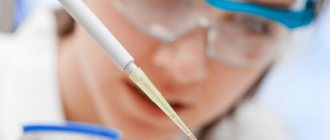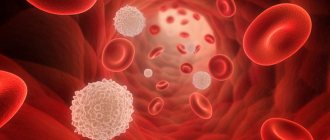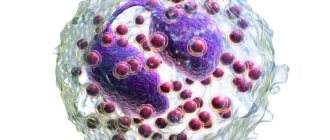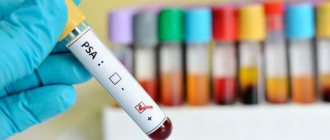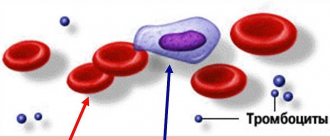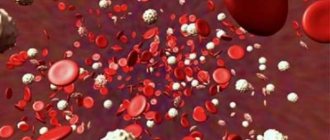How to lower white blood cells with medications
The very posing of the question of how to quickly lower white blood cell counts is unacceptable in terms of the use of any actions that bypass a more thorough blood test.
Leukocytes in the blood will show a decrease in their numbers only for a while, and then they will begin to restore the “population” with redoubled force, forming more and more new clusters.
Yes, there are some drugs, the use of which sharply reduces their amount (this is especially true for chemotherapy drugs). But regulating symptomatic manifestations without eliminating their main provoking factor is dangerous not only for health, but also for life. Therefore, it is necessary to treat the pathology that caused leukocytosis, and not the increase in leukocytes as such. Commonly used for treatment:
- broad-spectrum antibiotics - to suppress infectious agents;
- non-steroidal anti-inflammatory drugs - to affect foci of inflammation;
- local antimicrobial or anti-inflammatory agents - for skin damage and other injuries;
- complex therapy – to restore the activity of internal organs damaged by pathology.
Each technique is selected individually by the doctor and depends on the characteristics of the condition in each specific case.
Types of leukocytes
Leukocytes have a complete nuclear structure and, depending on the shape of the nucleus, they are divided into round, multilobular and kidney-shaped. They are also distinguished by size, which ranges from 6 to 20 microns. In the human body, white blood cells are produced by the bone marrow. They are divided into granular leukocytes (granulocytes), neutrophils (band and segmented), basophils and eosinophils, as well as monocytes and lymphocytes. Each type has its own purpose and does only its own job. That is why the state of the body can be judged by changes in these bodies. And often this task becomes the main one in the treatment of many diseases.
Let's find out how to lower leukocytes in the blood
Various chemical processes occur in the human body. One of the most important and complex is hematopoiesis. In this process, blood particles are formed in the bone marrow and help protect the body as a whole. White blood cells play a very important role in the blood. They easily fight infections, dangerous viruses and various bacteria. Blood particles produce enzymes that break down foreign bodies.
The content of blood particles in the blood is a very important parameter, determined by a general analysis. During wakefulness, the number of white cells can change. The level is affected by natural causes: emotional shocks, sports activities, diet, daily routine. Therefore, small deviations from average values are normal.
A strong increase in white blood cells is called leukocytosis. In most cases, this diagnosis is observed in pathologies. After identifying the diagnosis, the question arises - how to lower leukocytes.
- Various infectious diseases that are accompanied by fever. Such diseases include otitis media, colds, sore throat, bronchitis, meningitis, and pneumonia.
- Various viral diseases. These include hepatitis of all stages and rubella.
- Acute inflammation of the stomach and intestines.
- Purulent abscesses, peritonitis.
- Infectious diseases occurring in acute form, which include cholecystitis, appendicitis, pyelonephritis.
- Various inflammations, arthritis.
- Parasitic infections.
- Damage to ligaments and tissues. Sprains, injuries, wounds, burns.
- Severe dehydration, manifested as thickening of the blood.
- Heart attack;
- Leukemia;
- Splenectomy;
- Blood transfusion;
- Cancer, tumors;
- Mononucleosis;
- Kidney failure;
- Bleeding;
If, after a clinical analysis, an increased level of blood particles was detected, then the patient faces the question of how to lower white blood cells. It is worth considering that the disease leukocytosis itself is not a separate disease. It only signals inflammation in the body and is a consequence of a complex disease. Therefore, it is necessary to quickly undergo an examination of the whole body.
Delay can cause the development of a dangerous disease.
- For a bacterial infection, specialists prescribe antibiotics.
- For viral infections, antiviral drugs are prescribed.
- If you have helminthiases, you must start taking antiparasitic medications.
- If the increased level is associated with allergic reactions, specialists prescribe antihistamines.
- The reason for the increased level may be an increased diet, sports activities, or stress. In this case, treatment is not prescribed. In order to quickly reduce the level of white blood cells, you should establish a daily routine. A slight increase in blood particles is considered normal. The content of snow-white particles in the blood will be regulated naturally.
- When the norm increases, pregnant girls experience enhanced protection of the immune system. This process does not require adjustments. But during such a period, women are susceptible to diseases. Therefore, pathological causes cannot be excluded. Experts need to find out whether the increased levels of particles are associated with any developing disease. You should undergo additional clinical analysis and diagnostics of the body. If a disease is detected, specialists must prescribe the safest method of treatment.
people with elevated levels of leukocytes in the blood should
Do not hesitate to ask your questions to a staff hematologist directly on the website in the comments. We will definitely answer.Ask a question>>
- Privacy Policy
- Terms of use
- Copyright holders
- Adenoma
- Uncategorized
- Gynecology
- Thrush
- About blood
- Psoriasis
- Cellulite
- Ovaries
Reasons for high rates
The causes of leukocytosis in the blood can have different origins. These can be both physiological and pathological factors. Physiological leukocytosis is a condition of the body when there is a short-term increase in the content of leukocytes in the bloodstream and is observed in the following cases:
- intense sports or heavy physical labor;
- pregnancy in the last months of bearing a child;
- emotional stress;
- severe fatigue and overheating of the body;
- rich fatty protein foods.
If these reasons are eliminated, then the number of leukocytes in the blood test returns to normal. The occurrence of pathological leukocytosis is associated with various diseases, such as:
- viral and bacterial infections accompanied by fever (ARVI, tonsillitis, otitis media, bronchitis);
- inflammatory processes of the digestive system of the body (cholecystitis, gastritis, peptic ulcer of the stomach and duodenum);
- inflammatory processes of the respiratory system (pneumonia, lung abscess, tuberculosis);
- helminthic infestations;
- traumatic injuries to muscles and skin;
- blood thickening due to dehydration;
- burns of varying degrees.
But the cause of an increase in leukocytes is not always inflammatory processes in the body. An increase in the number of blood cells can be triggered by the following pathological processes:
- the development of malignant tumors in the body;
- diseases of the heart and blood vessels;
- acute and chronic blood loss;
- after a donor blood transfusion;
- blood diseases (leukemia, mononucleosis).
Increased leukocytosis detected during a laboratory blood test is only a symptom indicating the course of a pathological process in the body. How to lower leukocytes in the blood so that these blood counts return to normal and the clinical manifestations of the disease are stopped is the task of doctors.
It is necessary to carry out high-quality treatment of the disease that caused this painful condition. Based on the dynamics of monitoring the amount of white cells in the blood, the effectiveness of the therapy prescribed by a specialist is monitored.
How to increase white blood cells at home
There are a variety of ways to increase the level of white blood cells in the blood, but diet plays a fundamental role in the treatment process. As practice shows, it is almost impossible to increase the number of leukocytes without following a diet, even if you take special medications. This diet is prescribed by your doctor. Typically, the amount of carbohydrates consumed is limited; instead, the diet is enriched with protein foods and vitamins, especially ascorbic and folic acid. You also need to eat foods high in choline and the amino acid lysine.
The main products in the treatment of leukopenia - increasing leukocytes at home:
- Eat more citrus fruits and various berries.
- It is useful to consume royal jelly to increase the level of leukocytes. Its amount should not be too large, depending on the doctor's recommendations.
- You are allowed to drink large amounts of milk and other fermented milk products.
- Eat more vegetables and legumes, cooked or raw, which are high in fiber.
- As additional vitamins, you can use vitamin C, B9 - they effectively increase white blood cells.
- A decoction of barley, which is infused for half an hour on fire to increase the concentration of grain, is useful. To do this, you need to pour one and a half glasses of barley into a two-liter container and add water. Boil over a fire until the water is half boiled away, and then drink the strained liquid 200 grams twice a day.
If a low white blood cell count is detected, it is recommended to seek treatment from a hematologist - a specialist in the treatment of blood diseases. The hematologist must find the cause of leukopenia and prescribe treatment. In some cases, consultation with an oncologist, infectious disease specialist or immunologist is necessary.
The human body constantly contains leukocytes that are able to fight foreign agents that come into their field of vision. The tasks and abilities of each particle are individual. Some are able to recognize the enemy and report a threat to their fellow humans, others are able to give commands to action, others are able to train young cells to remember dangerous elements, and hard-working killer cells are able to destroy microorganisms. It would seem that the more smart cells, the more protected the body is. However, an increased number of white particles indicates the presence of unnatural processes in the body. In such a situation, it is urgent to find out the cause of the anomaly, which will determine how to lower leukocytes in the blood.
The level of white particles in the blood can change under the influence of natural physiological processes. In this case, the process is almost imperceptible to humans. In rare cases, dizziness and slight changes in temperature may occur.
If the level of leukocytes is affected by diseases and the process is pathological in nature, symptoms characteristic of the underlying disease are first monitored.
With leukocytosis – – unnatural conditions may be observed in the form of:
- weaknesses in the body;
- increased sweating;
- fatigue;
- weakened appetite;
- dizziness;
- elevated temperature;
- impaired vision;
- hematomas and bruises;
- weight loss;
- bleeding from mucous membranes;
- pain in the abdomen.
It is possible to confirm assumptions about changes in the quantitative indicators of white particles only by conducting a blood test.
Norm and reasons for deviations
The number of white holes in the blood depends on age and gender (provided there is no pathology). Immediately after birth there are a lot of them, as you grow older the number decreases, and by the age of 15 the level finally stabilizes. The norm for an adult, regardless of gender, is a value from 4 to 9x10 9 in 1 liter. Significant deviations to a smaller or larger direction are a sign of pathology and are designated by their own terms.
Leukocytosis
This is called an increase in the level of leukocytes. This phenomenon can have not only pathological, but also physiological causes. For example, the so-called redistributive leukocytosis is often observed in men, especially those prone to overeating, as well as those actively involved in sports or physical labor. In women, the norm is an increase in the number of leukocytes during pregnancy, as well as immediately before the onset of menstruation. In addition, in representatives of both sexes, white blood cells enter the blood more actively during stressful situations, drinking strong drinks and smoking.
Pathological increase is the response of the immune system to the effects of foreign agents and occurs when:
- Inflammatory processes provoked by pathogens of a viral or bacterial nature.
- Development of malignant neoplasms, and especially with leukemia.
- Extensive blood loss or poisoning with nitrobenzene and some other chemical compounds.
- The initial stage of radiation sickness.
- The use of certain medications, due to which white blood cells are synthesized and enter the blood in increased quantities.
When assessing the results of the analysis, the doctor assesses the degree of leukocytosis: a slight deviation from the reference values most often has physiological reasons, and there is no need for subsequent studies. High levels are a reason to suspect pathology and order additional tests.
Leukopenia
This condition is considered more dangerous, since a decrease in the level of leukocytes in the blood below 4x10 9 / l is a sign of serious diseases. The causes can be both congenital disorders of hematopoiesis and acquired ones:
- Cancerous tumors whose metastases affect bone tissue, leukemia, myelofibrosis, etc.
- Chemical damage to the bone marrow due to the entry of aggressive compounds into the body.
- Some infections such as tuberculosis, typhoid or HIV, as well as sepsis.
- The presence of 6 or 7 types of herpes virus in the body.
- Development of autoimmune pathologies.
- Deficiency of certain vitamins, mainly B-group.
- Rheumatic diseases, anaphylactic shock.
- Use of certain medications for chemotherapy.
- Ionizing radiation.
The last two points are the cause of leukopenia after treatment of cancerous tumors. This phenomenon is natural, and special rehabilitation therapy is prescribed between courses of drugs.
How is the disease treated?
It is possible to reduce white blood cells by eliminating the cause. Treatment is prescribed individually, and tests should be carried out throughout treatment to monitor the progress of recovery.
A large number of diseases can cause an increase in white blood cells. The doctor chooses the treatment method depending on what pathology caused the increase in the norm.
In infectious diseases, leukocytes try to neutralize the infection that has entered the body.
To suppress the causative agent of the disease and reduce the number of leukocytes, the doctor may prescribe antibacterial drugs.
In case of inflammatory processes, the doctor will determine the source of inflammation and prescribe the necessary medications.
In case of tissue damage or violation of the integrity of the skin, it is necessary to carry out complex therapy.
Anti-inflammatory and antimicrobial agents are selected from medications.
In case of allergic reactions, the patient should take antihistamines. If leukocytes are elevated as a result of liver dysfunction, then dietary nutrition will help eliminate the problem.
For oncological processes occurring in the body, it is important to carry out complex therapy. Treatment may include taking medications that restore the immune system, chemotherapy
Treatment may include taking medications that restore the immune system and chemotherapy.
In some cases, surgery is required. Bone marrow pathologies require long and complex recovery.
The doctor will treat a patient with such problems individually, regularly sending the patient for tests to monitor therapy.
In some cases, an increase in white blood cells occurs as a result of taking medications. When such drugs are discontinued, white blood cells decrease.
The number of leukocytes can be adjusted using steroids. In severe cases, leukapheresis is required.
An increase in the level of leukocytes signals pathological processes occurring in the patient’s body.
You cannot carry out treatment on your own without finding out the cause of the disorder. Only after the patient has passed the necessary tests will the doctor be able to prescribe effective treatment. Otherwise, adjusting the leukocyte level will not be effective.
Causes of increased leukocytes
The most common causes of leukocytosis:
- Infectious diseases accompanied by fever: pneumonia, bronchitis and others.
- Viral lesions: hepatitis, rubella and others.
- Otitis is an inflammatory disease of the ear.
- Meningitis is an inflammation of the lining of the brain.
- Acute intestinal inflammation.
- Acute infections: appendicitis, pyelonephritis, cholecystitis and others.
- Purulent processes: abscess, peritonitis and others.
- Any inflammatory processes, for example, arthritis.
- Tissue damage, for example, due to trauma, wounds, surgery.
- Parasitic infections.
- Dehydration of the body, accompanied by thickening of the blood, for example, with burns, diarrhea.
Less commonly, white blood cells increase in the following cases:
- with myocardial infarction (an increase in the level of white cells is a reaction to the death of heart muscle tissue);
- leukemia (stable leukocytosis for a long time);
- malignant tumors;
- removal of the spleen;
- infectious mononucleosis;
- renal failure;
- massive bleeding;
- blood transfusion.
- The growth of neutrophils is observed with bacterial and fungal lesions.
- Lymphocytosis – for viral infections, thyrotoxicosis, mononucleosis, intoxication, lymphocytic leukemia, recovery from certain infections.
- Eosinophilia is a sign of helminthic infestations, dermatosis, bronchial asthma, and serum sickness.
- Monocytes are elevated in rubella, syphilis, septic endocarditis, and malaria.
The severity of the disease is assessed by the degree of increase in leukocytes. In this case, it is also necessary to take into account age, since in the elderly leukocytosis can be mild even with severe infections.
How to normalize values
Eliminating deviations in the quantitative content of leukocytes is the task that a doctor faces when treating a disease that has caused changes in the blood count. Reducing these indicators is only possible if the cause that caused the pathological process in the body is eliminated.
Folk remedies
Basic drug treatment is prescribed by a specialist. Leukocytosis indicators are studied over time at certain intervals, the decrease of which reflects the quality of treatment. Relief of clinical symptoms and a decrease in leukocytosis, which occurs during the main treatment, can be supplemented by the use of folk remedies, which are used only on the recommendation of a doctor. These can be herbal infusions and teas, as well as various vitamin formulations.
They give a positive result, cleansing the body of waste and toxins. At the same time, they help increase the body’s defenses and normalize leukocytosis. The most popular folk remedies are:
- add lemon and cranberry juice, 15 grams each, and a tablespoon of liquid honey to a mixture of freshly squeezed carrot and radish juices (100 ml each). The entire mixture is thoroughly mixed and taken throughout the day;
- A mixture is prepared from the juice of 4 lemons, 100 grams of aloe juice, 300 grams of liquid honey and 500 grams of chopped walnuts. The composition is taken before meals 3 times a day;
- A mixture is prepared from motherwort, linden blossom, oregano, hop cones, valerian root, and lemon balm in equal proportions. A tablespoon of herbal raw materials is brewed with boiling water and infused in a thermos for 2 - 3 hours. Take half a glass before meals 3 times a day;
- herbal tea from horsetail - a tablespoon of raw material is brewed with boiling water and infused, after which half a glass is taken.
Lifestyle
If cases of leukocytosis are detected, due to physiological reasons that influenced its deviation from the norm towards an increase, it is necessary to adjust the daily routine. These activities, recommended by a specialist, are especially necessary for pregnant women. Measures aimed at correcting lifestyle:
- a full night's rest of at least 8 hours;
- dosed loads throughout the day;
- eliminating stressful situations at home or in the workplace;
- eliminating the effect of high temperatures on the body in the form of exposure to the sun, sauna or taking hot baths.
Nutrition
A diet that can reduce the number of leukocytes in the blood is also subject to mandatory correction. To achieve a positive result, the following diet changes are possible:
- complete and balanced meals 4 – 5 times a day in small portions;
- restriction in the intake of “heavy” meat and fatty foods, as well as any smoked and spicy foods;
- eating enough vegetables and fruits;
- maintaining a water regime, that is, drinking up to 2 liters of liquid per day in the form of juices, still mineral water, fruit compotes.
But if pathological leukocytosis is detected as a manifestation of a particular disease, mandatory drug treatment is carried out to eliminate this pathological process. It is not possible to quickly reduce the level of leukocytes in the blood, since the process of recovery of the body after any illness takes time.
Medication
Depending on the type of pathological process that causes high leukocytosis, drug therapy is a method of treating the disease and a way to reduce white blood cells during the patient’s recovery. Various diseases require the prescription of certain medications, which are recommended only by a specialist:
- taking broad-spectrum antibiotics is prescribed to suppress pathogens of various infections (staphylococcus, streptococcus, E. coli);
- non-steroidal anti-inflammatory drugs are recommended to relieve inflammation;
- anti-inflammatory and antimicrobial agents prescribed as local therapy for various injuries and diseases of the skin;
- antiviral drugs recommended for stopping a viral infection that has entered the body;
- antihistamines are taken when allergens enter the body;
- restorative treatment and vitamin therapy are included in the complex of therapeutic measures to improve immunity.
Properly prescribed treatment will not only control the process of disease regression, but also reduce the decrease in leukocytes to normal.
How else can you lower your white blood cell count?
An increase in the level of white blood cells can occur not only as a result of diseases developing in the body.
There are physiological factors that can disrupt the normal content of leukocytes in the blood:
- after meal;
- the patient eats a large amount of foods containing protein;
- the patient is intensely involved in sports and experiences heavy physical exertion every day;
- after taking a hot bath or after prolonged exposure to the sun;
- as a result of stress or psycho-emotional experience.
The doctor must obtain a reliable picture of the blood, so on the eve of the examination the patient must adjust his lifestyle, exclude sports for a while, replace bathing with a shower, and analyze his diet.
If the transcript indicates a low or high level of white blood cells, then, in addition to taking medications, the patient should rest for a sufficient amount of time for the body to recover after a hard day.
Sleep time should be long - at least 8 hours.
The daily routine should be adjusted. The patient should avoid overloading. It is important to monitor the timely intake of water into the body.
Dehydration will cause metabolic problems. To prevent your leukocyte level from jumping sharply, you need to eat small portions throughout the day.
Doctors advise not to overeat and not to include fatty, spicy or fried meats in your diet. Such products provoke the production of leukocytes.
If a patient often experiences emotional tension, stress, or depression, then he will need psychological help. Only a doctor should prescribe sedatives to a patient.
Nutrition
Proper nutrition is part of the treatment for leukopenia, which further helps maintain the level of blood cells at the desired levels. How to increase the white blood cell count with food?
Foods that increase white blood cells in the blood include:
- Meat products: preferably low-fat, easily digestible types of meat - rabbit, turkey.
- From cereals you should choose buckwheat, legumes, rice and rolled oats.
- Berries and fruits are a necessary component of the diet to productively increase the number of blood cells. It is recommended to eat more pomegranates, apricots, and citrus fruits.
- Vegetables (carrots, cabbage of all types, beets).
- Greens (parsley, dill, onion, asparagus, celery).
- Traditional foods that increase white blood cells are varieties of fatty fish and their liver (this is how omega-3 acids and zinc enter the body). Fish caviar has always been used to boost immunity and increase white blood elements.
- Fermented milk products will provide calcium and regulate digestion.
- It is useful to eat nuts and eggs during treatment.
- It is better to choose coarsely ground bread, vegetable oil.
You need to eliminate foods containing fast carbohydrates from your diet: pastries, cakes, sweets. Avoid high-fat dairy products and pork.
If leukocyte counts are low, the doctor usually gives the patient a memo, which includes a list of which foods increase leukocytes
Diet is an excellent way to quickly increase the number of leukocytes in the blood if their level has dropped slightly (to 3 × 10⁹/l). In this case, it will be enough to adjust the diet and, with the help of products, raise the level to normal levels. In case of more severe conditions, diet will also be a good help, but as an additional method to drug treatment.
How to increase the level of leukocytes in the blood?
First you need to temporarily exclude some foods from your diet:
- fatty pork, containing easy-to-digest protein, which, however, is very quickly destroyed (processed, absorbed);
- offal - liver, kidneys, brains, tongue;
- fermented milk products with a high percentage of fat content (homemade cottage cheese, whole cow's milk, hard cheeses, homemade curdled milk, fermented baked milk);
- baked goods made from premium wheat flour;
- sweets.
There are also ways to increase the number of leukocytes in the blood:
- chicken, turkey, rabbit, lean lamb;
- sea fish (mainly red varieties), various types of black and red caviar;
- various seafood, seaweed;
- chicken eggs, but quail eggs are better;
- vegetable oils;
- red and orange vegetables and fruits;
- all kinds of nuts;
- greens (dill, green onions, leeks, parsley).
They increase the number of white blood cells in different ways, but diet plays a major role in this process. Practice shows that without compliance with it, any therapy against leukopenia will not have significant success, even when taking special medications. The diet is prescribed by the attending physician. As a rule, it consists of limiting the consumption of carbohydrates, which are replaced by foods rich in proteins and vitamins (especially folic and ascorbic acids). Also, the diet should be rich in foods with plenty of folic acid, the amino acid lysine, choline and vitamin C.
The number of white cells will quickly reach normal levels if you follow a special diet based on the following foods:
- cottage cheese,
- kefir,
- sour cream and yogurt (low-fat);
- Fish and seafood;
- lean meat (beef, chicken, etc.);
- rice and oats.
It is especially recommended to use heavily
- greenery,
- carrot,
- beets,
- shrimps,
- mussels,
- crab meat,
- squid,
- caviar,
- dry red wine in moderate doses,
- chicken eggs,
- nuts,
- raw vegetables,
- fresh fruits,
- berries and freshly squeezed juices from them.
Among vegetables, beet juice is the best for treatment. As for fatty meats, as well as liver, their consumption should be limited.
Role of leukocytes
Leukocytes make up a group of blood cells along with red blood cells and platelets. These uncolored blood cells are responsible for immunity. They are able to detect pathogens penetrating from the outside and destroy them, as well as fight internal pathological processes.
The leukocyte group consists of five types of cells: lymphocytes, monocytes, neutrophils, basophils and eosinophils.
The first two belong to agrunolocytes, that is, they do not have granules in the cytoplasm. The rest are granular and are called granulocytes.
Each type performs specific functions:
- Neutrophils are the most numerous group (from 47 to 72%). In the blood of a healthy person, mainly mature forms (segmented) and very few young forms (band) circulate. Their main purpose is to fight harmful bacteria. They immediately respond to bacterial infection, which is expressed by an increase in the number of young forms in the blood. Neutrophils have the ability to quickly move through the body, accumulate in affected tissues, capture pathogenic microbes and destroy them.
- Basophils are the largest granulocytes. Their content in the blood normally ranges from 0.5 to 1%. They perform different functions, but the main one is participation in the formation of inflammation and immediate allergic reactions (for example, anaphylactic shock). This is possible due to the fact that their granules contain many bioactive chemicals - mediators of inflammation and allergies. These are serotonin, histamine, heparin, prostaglandins, leukotrienes and others.
- Eosinophils are able to move quickly, penetrate beyond the vascular wall and carry out phagocytosis, but their main property is cytotoxic. They take an active part in the fight against parasitic infections and in the formation of antiparasitic immunity. In addition, they can both absorb and release allergy mediators, that is, they can both suppress an allergic reaction and cause it.
- Lymphocytes are the main immune cells of the body, which make up from 25 to 40% of the total number of leukocytes. They are responsible for cellular and humoral immunity. Lymphocytes produce antibodies against harmful agents. These are the main fighters against viral infections and cancer cells.
- Monocytes are the largest white cells, the content of which in healthy people ranges from 3 to 11%. These macrophages perform several functions, but the main one is phagocytic defense against microbes.
Reasons for changes in leukocyte levels
The level of leukocytes in a person who does not have health problems should be within the range of 4 – 8 * 10 9 per 1 liter.
A condition in which the white blood cell count is higher than normal is called leukocytosis.
The doctor should refer a patient with such a diagnosis for additional examination.
There are a number of reasons why the level of white blood cells in the blood increases:
- infectious diseases accompanied by elevated body temperature - sore throat, otitis media, meningitis, pneumonia and others;
- illnesses caused by viruses - rubella, hepatitis;
- an inflammatory process occurring in the stomach in acute form;
- peritonitis, purulent abscess;
- acute infectious processes – pyelonephritis, appendicitis;
- the patient has damaged tissue or ligaments;
- the patient was burned or injured;
- the presence of parasites in the body;
- the patient is severely dehydrated, causing the blood to clot;
- the patient suffers from arthritis, arthrosis and other ailments of the musculoskeletal system.
Medication methods
When high levels are confirmed by additional diagnostics and are of pathological origin, it is possible to reduce leukocytes only by curing the disease that caused the abnormalities. How to lower white blood cells in these situations is determined by the doctor individually.
There are quite a few pathologies that can affect the number of white cells. All of them are associated with the entry of foreign infections into the body, violations of tissue integrity, inflammatory processes, and the body’s inability to control cell proliferation.
Treatment methods are selected depending on the specific case:
- Infectious diseases are associated with infections entering the body that white blood cells try to neutralize. Antibiotics are used to suppress the pathogen.
- Foci of inflammation are treated with non-steroidal anti-inflammatory drugs.
- Injuries and damage to the skin are treated with local antimicrobial and anti-inflammatory drugs.
- Pathologies of the integrity of internal organs are treated with complex therapy aimed at restoring activity.
- For diseases of the liver and spleen, in addition to medications, dietary nutrition is mandatory.
- Illnesses caused by allergens are treated with antihistamines.
- Oncological manifestations are subject to proper correction. Treatment includes surgery, immunorestorative drugs, and chemotherapy.
- Treatment of pathologies of bone marrow activity is a long, complex and multifaceted process.
- If leukocytes are elevated while taking medications, the dosage is gradually reduced until discontinuation and replacement with a non-hazardous drug.
The number of white particles is corrected using steroid drugs. And in severe cases, leukophoresis is performed, extracting leukocytes from the patient’s blood and transfusing purified blood back to him.
White blood cells in the human body play an important role in fighting all kinds of bacteria, infections and viruses that surround us everywhere. A deviation in the level of white blood cells in the blood indicates various types of abnormalities that have arisen in our body. These deviations may not cause significant harm, or may be signs of serious illness. Today we will talk about how to reduce white blood cells in the blood.
The fact that leukocytes have increased compared to the normal state can be judged by the results of a general blood test. If the deviation is several thousand units, we can assume inflammation occurring in the body. If the deviation exceeds hundreds of thousands or more, there are grounds to conduct an examination for leukemia.
However, before lowering white blood cells, it is necessary to understand what exactly caused their increase. After all, the nature of subsequent treatment depends on what became the root cause. Therefore, the sequence of actions for elevated leukocytes can be described as follows:
- Complete blood test
- Undergoing an examination aimed at identifying physiological or pathological causes.
- In case of physiological abnormalities (stress, strain, insufficient sleep, poor diet, menstruation, pregnancy), you need to reconsider your lifestyle.
- In the case of a pathological nature, it is necessary to treat the disease causing this deviation.
How to reduce?
If during a blood test it was discovered that the level of white cells is elevated, the question may arise about how to lower it. But leukocytosis itself is not considered a disease; it is just a sign of some disease, the body’s reaction to a pathological process. Therefore, first of all, you need to be examined and find the cause of this condition. Thus, in order to lower white blood cells, you need to cure the disease that led to their increase.
If the cause is an inflammatory process, the doctor will prescribe anti-inflammatory drugs. If the infection is bacterial, antibiotics will help. For viral diseases, antiviral agents are indicated, and for helminthiasis, antiparasitic agents are indicated. If leukocytosis is associated with allergies, antihistamines will come to the rescue.
If the increase is associated with physiological reasons, such as rich nutrition, physical activity, stress, then nothing special needs to be done. This increase in white cell levels is considered normal and will be regulated naturally.
Leukocytosis can be observed in pregnant women. As a rule, this is due to increased immune defense in the body and does not require correction. But at the same time, pathological causes cannot be excluded. Therefore, in case of any deviations from the norm in the blood test of the expectant mother, it is necessary to clarify whether this change is associated with the development of the disease. During this period, only a doctor can choose the safest method of treatment.
Role and functions of leukocytes
Leukocytes, which are a component of blood, play a very important role in human life. These are the main defenders standing guard and preventing the invasion of pathogenic viruses and microorganisms into the internal environment.
White cells, moving along the bloodstream and tissue space, perform important functions. The leukocyte group of cells, depending on their structure, is divided into 5 types of blood cells, each of which performs its own function, namely:
In inflammatory diseases of various etiologies, there is an increase in the number of leukocytes in the blood count. This condition is called leukocytosis.
Traditional methods
Since ancient times, our ancestors were treated with herbs. In those days, people did not know how to lower the level of white blood cells because they had no idea whether their level was low or high. Thus, our ancestors did not have a problem with reducing the number of leukocytes in the blood.
Modern chemotherapy is very effective, but even now many people prefer medicinal plants (linden, blackthorn, lingonberry, etc.). Decoctions and tinctures from these plants are no less effective. Also, to get rid of various ailments, our grandparents used propolis. This natural remedy is a true elixir of health.

